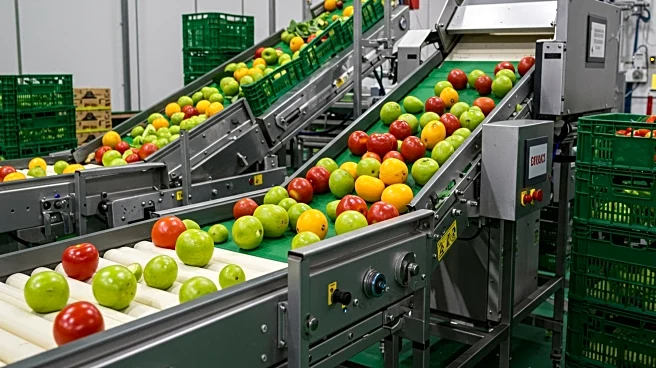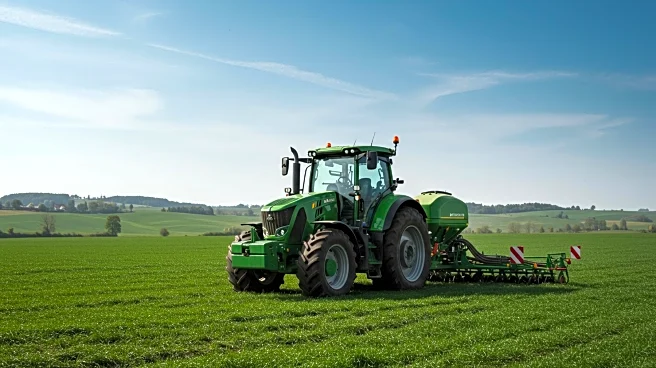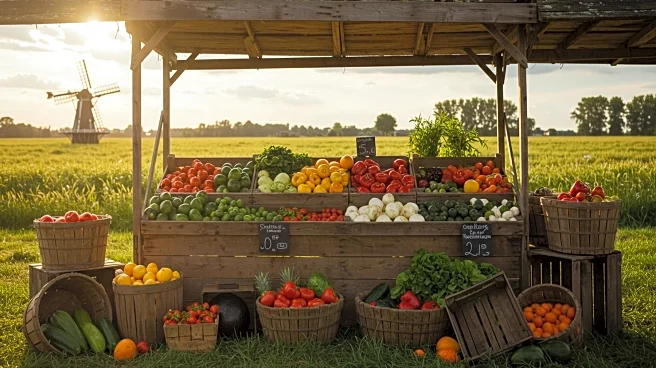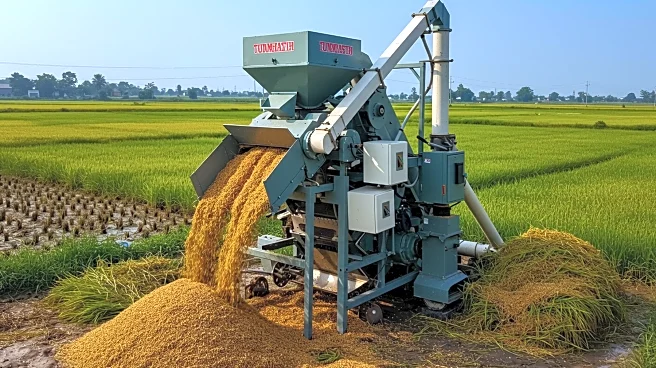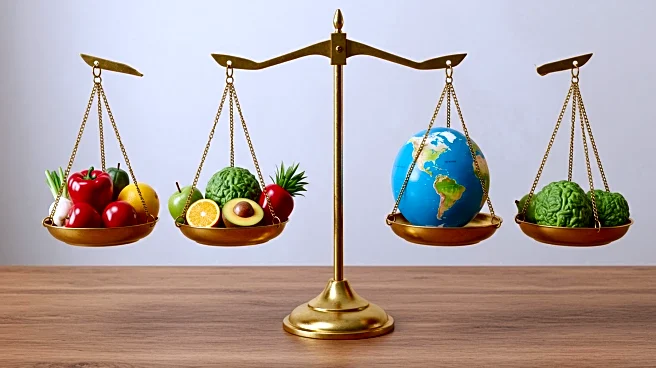What's Happening?
The Agriculture Ministry is implementing a new initiative to convert rejected fruits and vegetables into processed goods. This effort aims to reduce waste and increase farmer incomes by utilizing produce that does not meet export standards in terms of size, shape, or appearance. Despite these aesthetic shortcomings, the quality of the produce remains high, allowing it to be transformed into value-added products. Agriculture Minister Tomasi Tunabuna emphasized the importance of supporting this initiative to reduce postharvest losses, improve food security, and generate income for rural communities. Additionally, the Ministry is working to revive key industries such as cocoa, coffee, and coconuts, as part of a broader plan to promote biodiversity and sustainability.
Why It's Important?
This initiative is significant as it addresses multiple challenges faced by the agricultural sector, including waste reduction and income generation for farmers. By converting rejected produce into processed goods, the Ministry is enhancing food security and supporting rural economies. The revival of industries like cocoa, coffee, and coconuts further contributes to economic diversification and sustainability. Aligning production with global demand can expand market reach, potentially increasing Fiji's agricultural exports and strengthening its economic position.
What's Next?
The Ministry plans to continue collaborating with exporters and development partners to ensure that production aligns with global demand. This collaboration aims to increase Fiji's market reach and support the growth of its agricultural sector. The focus on value-added products and the revival of key industries will likely lead to further initiatives aimed at enhancing sustainability and biodiversity.
Beyond the Headlines
The initiative to convert rejected produce into processed goods highlights the importance of sustainable agricultural practices. By reducing waste and promoting biodiversity, the Ministry is contributing to environmental conservation efforts. This approach also underscores the potential for innovation in agriculture, where aesthetic standards do not necessarily dictate the value of produce.
